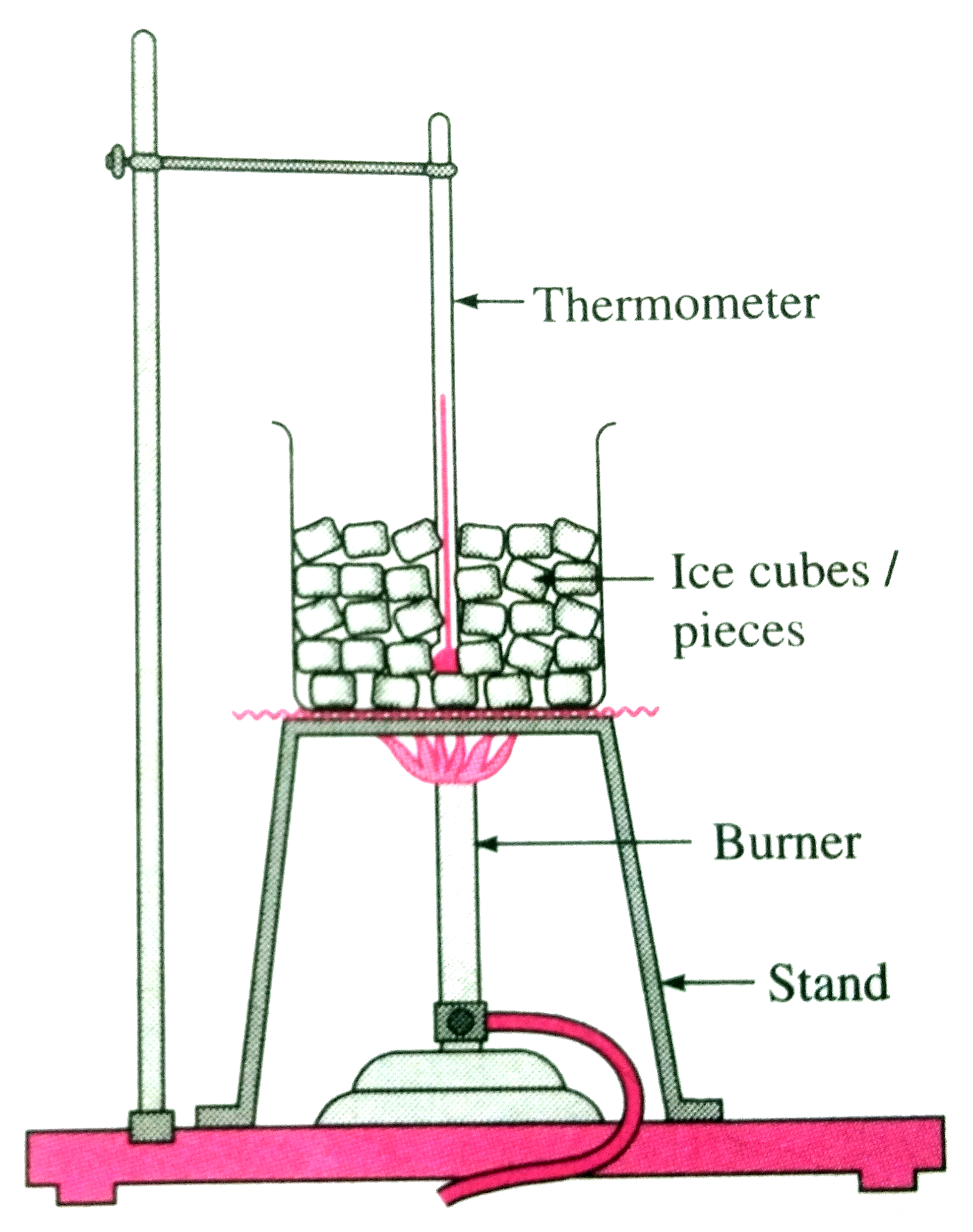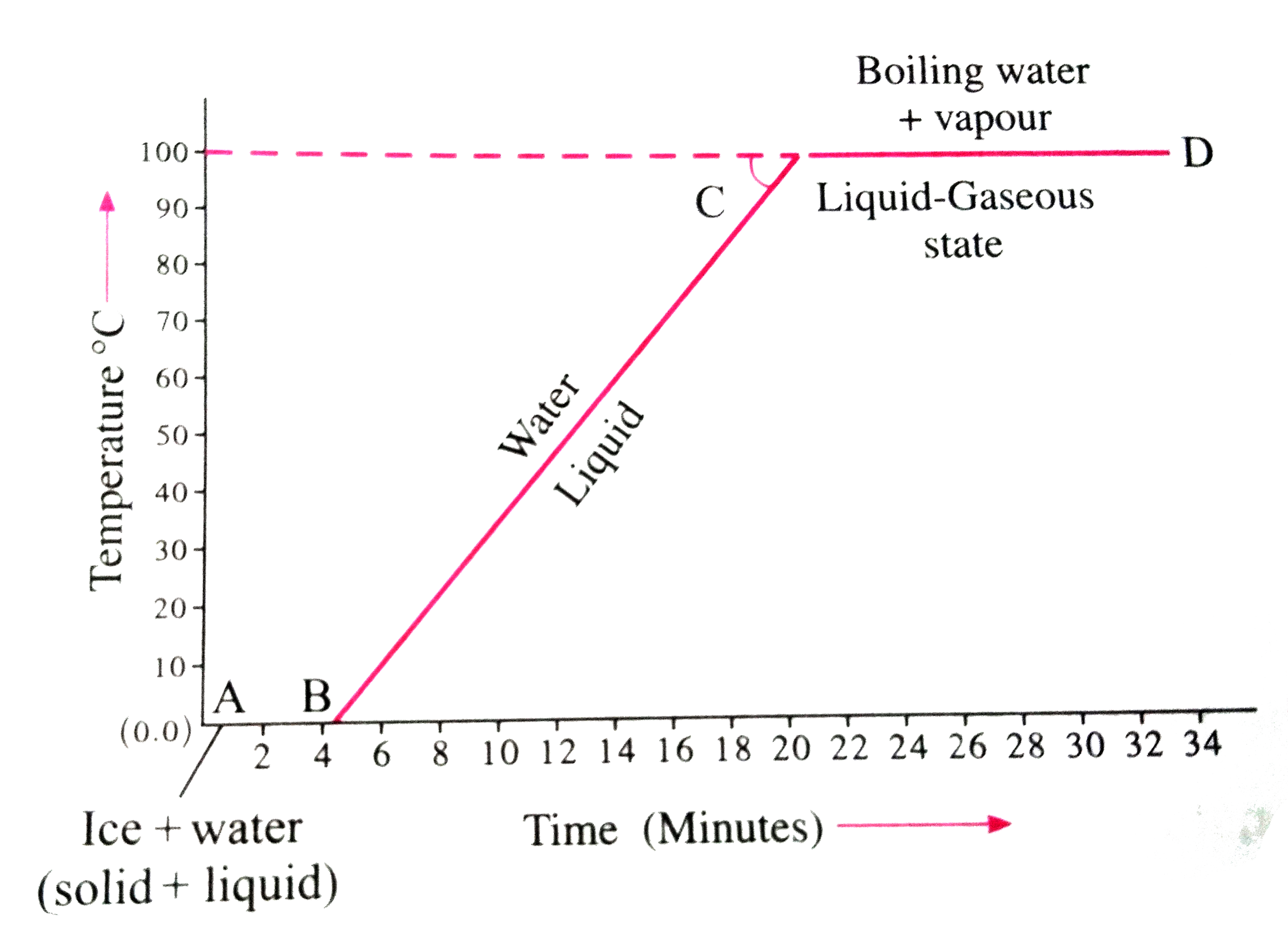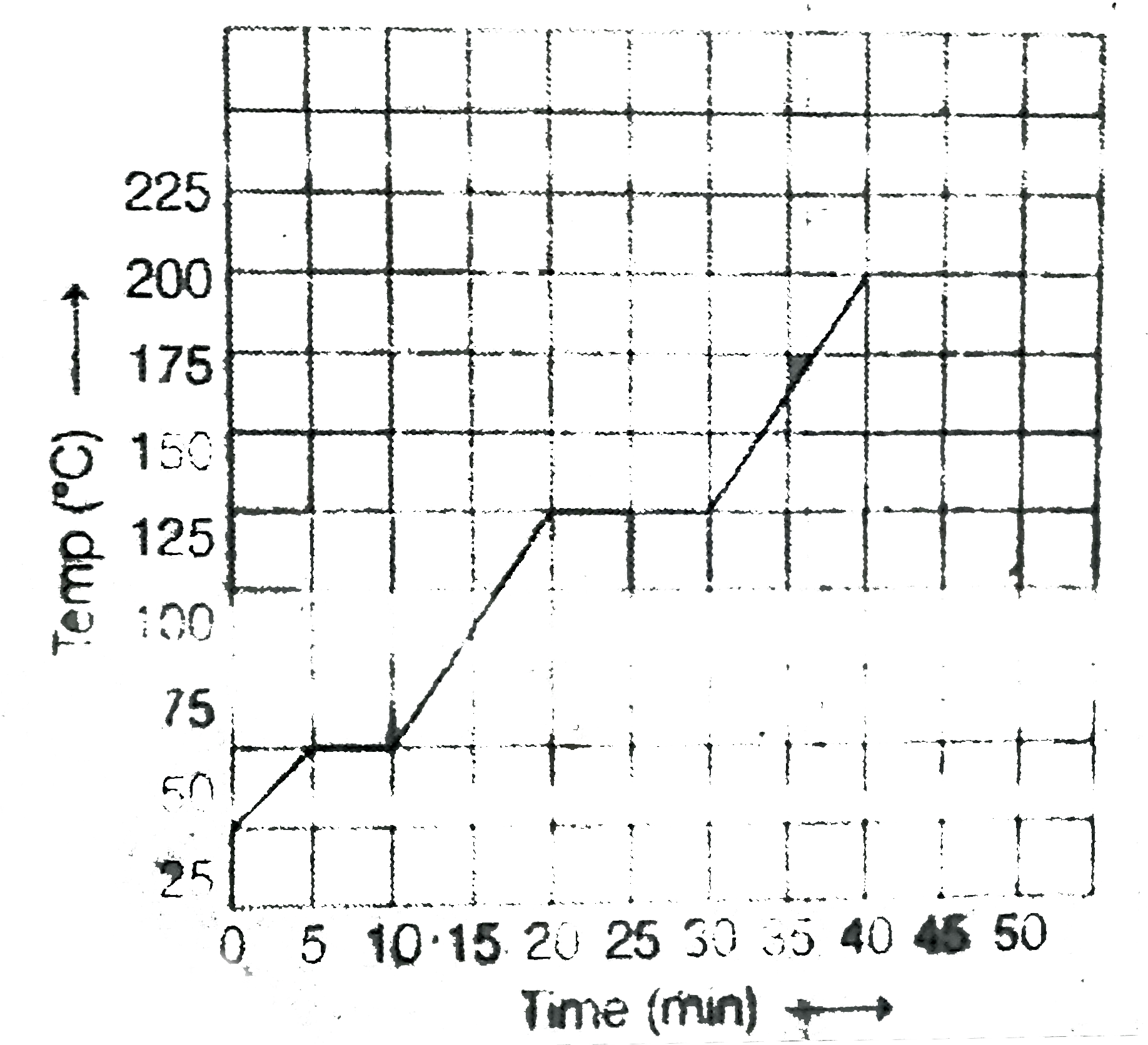How will you explain the role of latent heat in the change of state of a substance?
When a solid is heated , initially , its temperature increases . Here , the heat absorbed by the body (substance) is used in increasing the kinetic energy of the particles (atomic , molecules, etc.) of the body as well as for doing work against the forces of attraction between them . As the heating is continued , at a certain temperature (melting point) , solid is converted into liquid . In this case , the temperature remains constant and the heat absorbed is used for weakening the bonds and conversion into liquid phase (liquid state) . This heat is called the latent heat of fusion .
When a liquid is converted into the gaseous phase (gaseous state) , at the boiling point , the heat absorbed is used for breaking the bonds between the atoms or molecules . This heat is called the latent heat of vaporization .
Some solids , under certain conditions are directly transformed into the gaseous phase . Here the heat is absorbed but the temperature remains constant . The absorbed heat is used for breaking the bonds between atoms or molecules . This heat is called the latent heat of sublimation .
In general , latent heat is the heat absorbed or given out by a substance during a change of state at constant temperature . In transformation from liquid to solid , gas to liquid and gas to solid , latent heat is given out by the body (substance) .
Topper's Solved these Questions
- BOOK - NAVNEET PUBLICATION - MAHARASHTRA BOARDCHAPTER - MODEL ACTIVITY SHEET EXERCISE - ANSWER THE FOLLOWING QUESTIONS1videos
MODEL ACTIVITY SHEET
- BOOK - NAVNEET PUBLICATION - MAHARASHTRA BOARDCHAPTER - MODEL ACTIVITY SHEET EXERCISE - ANSWER THE FOLLOWING5videos
MODEL ACTIVITY SHEET
- BOOK - NAVNEET PUBLICATION - MAHARASHTRA BOARDCHAPTER - MISCELLANEOUS QUESTIONS EXERCISE - Assignment2videos
MISCELLANEOUS QUESTIONS
- BOOK - NAVNEET PUBLICATION - MAHARASHTRA BOARDCHAPTER - MODEL ACTIVITY SHEET FOR PRACTICEEXERCISE - Exercise18videos
MODEL ACTIVITY SHEET FOR PRACTICE
Similar Questions
Explain the role of latent heat in the change of state of a substances
View Solution(1) Take a few pieces of ice in a glass beaker as shown in figure.
(2) Insert the bulb of a thermometer in ice and measure its temperature.
(3) Put the beaker on a stand and heat the ice using a burner.
(4) Record the temperature using the thermometer after every minute.
(5) As the ice is heated,it starts melting. Stir the mixture of ice and water.
(6) Continue the heating even after ice starts melting.
(7) Draw a graph of temperature versus time.
Explain the role of latent heat in the change of state of a substance.
 View Solution
View Solution
Knowledge Check
- Question 1 - Select One
During the change of state the heat is
AabsorbedBliberatedCabsorbed or liberatedDneither absorbed nor liberated - Question 2 - Select One
The graph shown in the figure represents change in the temperature of 5 kg of a substance as it absorbs heat at a costant rate of 42 kJ min−1. The latent heat of vaporization of the substance is :
 A96kJ kg−1B126kJ kg−1C84kJ kg−1D12.6kJkg−1
A96kJ kg−1B126kJ kg−1C84kJ kg−1D12.6kJkg−1
What do you mean by change of state of a substance?
View SolutionExplain how heat affects during a change of state.
View SolutionA change of state is a change of a substance from ……….
View SolutionGive the usual name for the following :
Heat required to change the state of a substance without changing the temperatureView SolutionThe latent heat of fusion of a substance is always less than the latent heat vapourization or latent heat of sublimation of the same substace. Explain.
View SolutionThe given graph shows the heating curve for a pure substance. The temperature rises with time as the substance is heated :
(a) What is the physical state of the substance at the points A, B, C and D ?
What is the melting point of the substance ?
(c ) What is its boiling point ?
(d) What happens to the temperature while the substance is changing state ?
(e ) The substance is not water. How can you judge from the graph ?View Solution

